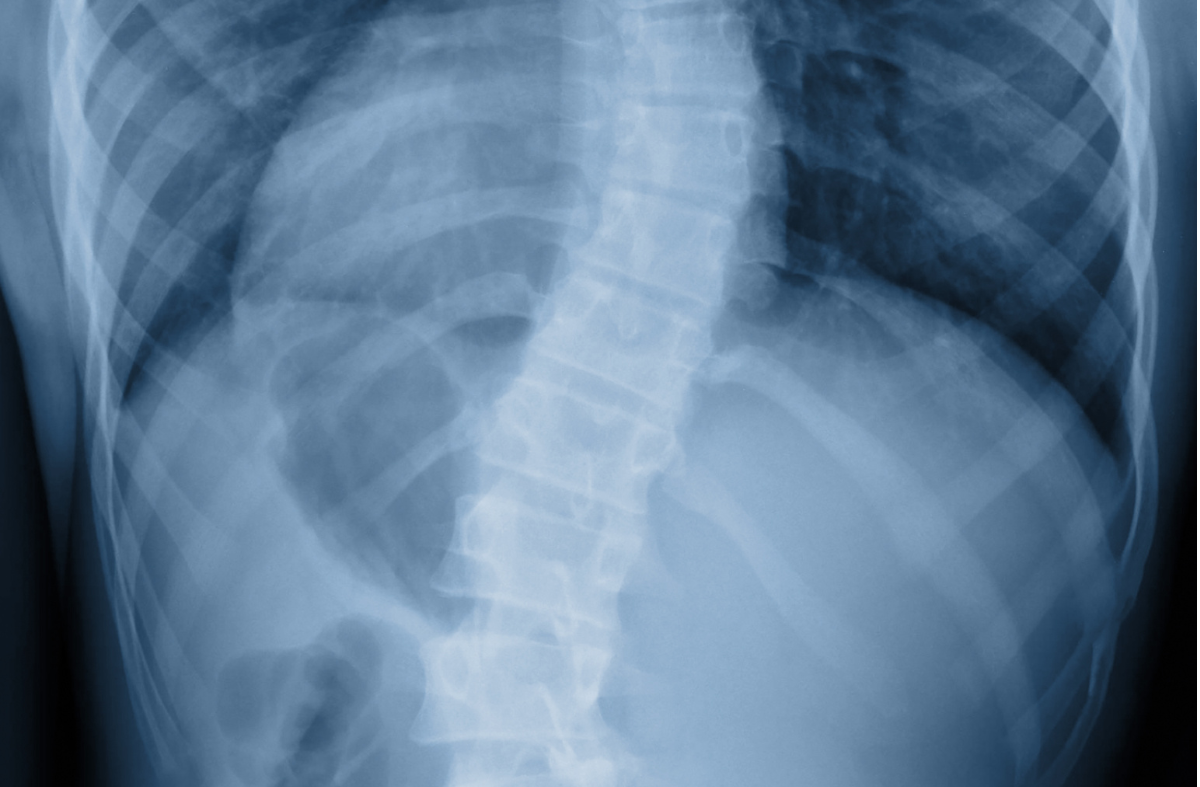Imagine a winding road, curving and twisting in unexpected ways. Now picture that same curve within the spine of your child. It’s not an easy image to digest, is it? This is the reality for many parents whose kids are dealing with Idiopathic Adolescent Scoliosis – a condition that causes an abnormal curvature of the spine during adolescence.
The word ‘idiopathic’ may sound intimidating, but it simply means that the cause is unknown. This condition often appears without warning during a child’s growth spurt, leaving parents feeling helpless and anxious. The good news? You’re not alone in this journey and there are effective treatment options available to help manage this condition.
In this article, we will demystify Idiopathic Adolescent Scoliosis by explaining what it is, why early screening is crucial (especially for girls at age 10 and 12, boys at age 12), how posture can reveal potential signs of scoliosis and when it’s time to consult a doctor or chiropractor. We’ll also discuss why x-rays play an important role in diagnosing scoliosis. So let’s straighten out some facts about this mysterious curve!
What Is Idiopathic Adolescent Scoliosis?
Idiopathic adolescent scoliosis is a medical condition that primarily affects children between the ages of 10 and 18. It’s characterized by an abnormal, sideways curvature of the spine that can lead to various physical and health complications if left untreated. According to a review article in American Family Physician, this form of scoliosis accounts for about 85% of all diagnosed cases in adolescents.
The term “idiopathic” means that the cause is unknown. Despite extensive research, scientists are still puzzled as to why some kids develop this condition while others don’t. However, it’s widely accepted that idiopathic adolescent scoliosis isn’t caused by carrying heavy backpacks or poor posture – common misconceptions often associated with spinal deformities.
Definition and Prevalence
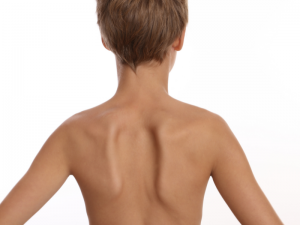 In medical terms, idiopathic adolescent scoliosis (IAS) is defined as a lateral curvature of the spine measuring more than 10 degrees on an X-ray. The curve can appear anywhere along the spine but most commonly develops in the thoracic (upper) or lumbar (lower) regions.
In medical terms, idiopathic adolescent scoliosis (IAS) is defined as a lateral curvature of the spine measuring more than 10 degrees on an X-ray. The curve can appear anywhere along the spine but most commonly develops in the thoracic (upper) or lumbar (lower) regions.
As for its prevalence, IAS affects approximately 2-4% of children aged between 10 and 18 years old worldwide according to a study published in Lancet. This equates to millions of adolescents globally who are living with this condition right now.
The Spinal Curve Mystery
Despite being such a widespread issue among young people, idiopathic adolescent scoliosis remains somewhat enigmatic due to its unpredictable nature. Some children may have only mild curvatures that never progress while others can experience rapid progression leading to severe spinal deformity within just a few years.
What makes it even more puzzling is how differently boys and girls are affected by IAS. nn. This gender disparity is one of the many mysteries surrounding this condition that researchers are still trying to unravel.
Signs and Symptoms to Watch For
The signs and symptoms of idiopathic adolescent scoliosis can be subtle at first, making it difficult for parents or even healthcare professionals to detect without a thorough physical examination. Common signs include uneven shoulders, prominent shoulder blade, uneven waistline, or one hip appearing higher than the other.
In more severe cases, IAS can cause noticeable changes in posture such as leaning to one side or having a hunched back. It’s also worth noting that while most children with IAS don’t experience pain, some may complain about back discomfort especially after prolonged periods of sitting or standing.
When to Seek Medical Advice
It’s recommended that girls get screened for scoliosis at ages 10 and 12, and boys at age 12 during routine pediatric check-ups. However, if you notice any signs suggestive of scoliosis in your child outside these age brackets, it’s advisable to seek medical advice promptly.
Early detection plays a crucial role in managing idiopathic adolescent scoliosis effectively. The sooner it’s diagnosed, the better the chances are for preventing progression and minimizing potential complications down the line.
Risk Factors and Genetics
While anyone can develop idiopathic adolescent scoliosis regardless of their lifestyle or health status, certain factors seem to increase its risk. Age is one such factor – children who are just entering puberty are more likely to be diagnosed with IAS due to rapid growth spurts during this period which can exacerbate spinal curvatures.
Genetics also play a significant role in determining who gets IAS. According to research published in StatsPearl Publishing, individuals with a family history of scoliosis have up to a 30% increased risk compared with those without such history.
In our next discussion, we’ll delve into how idiopathic adolescent scoliosis is diagnosed and why tools like X-rays are critical in this process.
Diagnosing Idiopathic Adolescent Scoliosis
Idiopathic adolescent scoliosis is a condition that affects the spine, causing it to curve sideways. This condition often develops during the growth spurt just before puberty, affecting about 2-4% of adolescents. Early detection and diagnosis are crucial in managing this condition effectively.
The process of diagnosing idiopathic adolescent scoliosis involves several steps. Initially, a thorough medical history is taken to rule out any underlying conditions that may be causing the spinal curvature. This includes asking questions about family history of scoliosis or other spinal disorders, as well as any symptoms the child may be experiencing such as back pain or difficulty breathing.
Physical Examination Insights
A physical examination is an integral part of diagnosing idiopathic adolescent scoliosis. During this exam, a healthcare professional will look for signs of scoliosis such as uneven shoulders or hips, prominent ribs, or a noticeable curve in the spine when viewed from behind.
One common method used during physical exams is the Adam’s Forward Bend Test. The child bends forward at the waist with arms hanging and palms joined together while the examiner views their back from behind. If there’s a hump on one side of their rib cage when they bend over, it could indicate scoliosis.
Posture Analysis Techniques
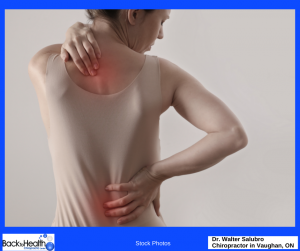 Posture analysis techniques are also employed to screen for idiopathic adolescent scoliosis. These techniques involve observing how children stand and move to identify any abnormalities in their posture that might suggest spinal curvature.
Posture analysis techniques are also employed to screen for idiopathic adolescent scoliosis. These techniques involve observing how children stand and move to identify any abnormalities in their posture that might suggest spinal curvature.
For instance, if one shoulder blade appears more prominent than the other or if there’s an asymmetry in waistline creases – these could be potential signs of scoliosis. It’s important to note that girls should ideally be screened at ages 10 and 12 while boys should be screened at age 12 since these are periods where rapid growth spurts occur which can exacerbate the condition.
Imaging Tests Used in Diagnosis
Imaging tests like X-rays and MRI scans are often used to confirm a diagnosis of idiopathic adolescent scoliosis. These tests provide detailed images of the spine, allowing healthcare professionals to see the exact location and degree of curvature.
An X-ray is usually the first imaging test ordered if physical examination or posture analysis suggests scoliosis. It provides a clear image of the bones in the spine and can show if there’s any rotation in addition to sideways curvature. In some cases, an MRI scan may be needed to rule out other conditions that could be causing spinal curvature such as tumors or infections.
X-rays and MRI Scans
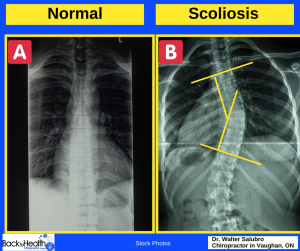 X-rays are crucial for diagnosing idiopathic adolescent scoliosis because they allow doctors to measure the angle of spinal curvature, known as Cobb angle. This measurement helps determine how severe the scoliosis is and guides treatment decisions.
X-rays are crucial for diagnosing idiopathic adolescent scoliosis because they allow doctors to measure the angle of spinal curvature, known as Cobb angle. This measurement helps determine how severe the scoliosis is and guides treatment decisions.
MRI scans, on the other hand, are not typically used for initial diagnosis but may be ordered if there’s concern about an underlying condition causing scoliosis. They offer more detailed images than X-rays, showing soft tissues such as muscles and nerves in addition to bones.
Monitoring Progression Over Time
Once diagnosed with idiopathic adolescent scoliosis, it’s important for children to have regular check-ups so their healthcare provider can monitor progression over time. This involves repeat physical examinations and imaging tests at intervals determined by how severe their condition is.
For mild cases of scoliosis (Cobb angle less than 20 degrees), monitoring might involve check-ups every six months along with home exercises aimed at improving posture and muscle strength. For moderate to severe cases (Cobb angle greater than 20 degrees), more frequent check-ups may be required along with consideration for brace therapy or surgery.
Growth Patterns Impact on Scoliosis
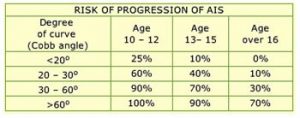 Growth patterns play a significant role in how idiopathic adolescent scoliosis progresses. Rapid growth during puberty can cause the spinal curvature to worsen, which is why regular monitoring during this period is so important.
Growth patterns play a significant role in how idiopathic adolescent scoliosis progresses. Rapid growth during puberty can cause the spinal curvature to worsen, which is why regular monitoring during this period is so important.
In fact, research shows that girls who are diagnosed with scoliosis before their first menstrual period tend to have a higher risk of progression compared to those diagnosed after. This highlights the importance of early screening and diagnosis in managing idiopathic adolescent scoliosis effectively.
As we’ve seen, diagnosing idiopathic adolescent scoliosis involves a combination of medical history taking, physical examinations, posture analysis techniques, and imaging tests. Regular monitoring over time is crucial for managing the condition and preventing progression. In our next discussion, we will delve into various treatment options available for managing scoliosis.
Treatment Options for Managing Scoliosis
When it comes to managing adolescent scoliosis, there are a variety of treatment options available. The choice of treatment depends on the severity and progression of the curve, as well as the age and overall health of the patient. The main goal is to prevent further curvature and alleviate any discomfort or pain. It’s important to remember that each case is unique, so what works for one person might not work for another.
Non-Surgical Interventions
Non-surgical interventions are often the first line of defense in treating scoliosis. These can include physical therapy, bracing, chiropractic care, and lifestyle changes such as diet and exercise. Exercises can help strengthen muscles around the spine, improving posture and reducing pain. Bracing is typically recommended when the curve is moderate to severe but still has potential to worsen due to growth.
Bracing as a Preventative Measure
Bracing plays a crucial role in preventing curve progression in children with idiopathic adolescent scoliosis. A brace won’t cure scoliosis or reverse existing curvature; instead, its purpose is to halt or slow down further development of spinal curves while your child grows. The type of brace used will depend on where in your child’s spine the curve exists.
Types of Braces Used in Treatment
There are several types of braces used in treating scoliosis: Boston Brace (the most commonly used), Charleston Bending Brace (for nighttime use), Milwaukee Brace (used less frequently due to bulkiness), Providence Brace (also designed for nighttime wear), and ScoliBrace (a 3D corrective brace). Each brace has its own advantages depending on individual patient needs.
Physical Therapy Benefits
Physical therapy offers numerous benefits for those dealing with adolescent idiopathic scoliosis. It helps improve strength, flexibility, balance, body awareness – all key elements needed for maintaining good posture despite having a curved spine. Tailored exercises can also help manage pain and discomfort, making daily activities easier.
Exercises Tailored for Scoliosis Patients
Specific exercises tailored to the individual’s scoliosis condition can be beneficial. These might include stretching to improve flexibility, strengthening exercises targeting weak areas, and aerobic exercise for overall health. It’s important that these exercises are supervised by a trained professional to ensure they’re done correctly and safely.
Surgical Considerations
In severe cases where non-surgical interventions aren’t enough, surgery may be considered. This is typically reserved for curves greater than 45-50 degrees or in cases where the curve is progressing rapidly despite other treatments. The goal of surgery is to correct as much of the deformity as possible and prevent further progression.
Indications for Surgery
Indications for surgery usually involve a combination of factors: severity and location of curve, age (whether the child still has significant growth remaining), rate of progression, and impact on physical function or appearance. A thorough evaluation by an experienced medical team will determine if surgery is the best option.
Assessing Severity and Potential Outcomes
Before deciding on surgical intervention, it’s crucial to assess both severity of scoliosis and potential outcomes post-surgery. X-rays play a vital role in this assessment process – providing detailed images that allow doctors to measure curvature angles accurately. Remember though that while surgery can significantly reduce spinal curvature, it doesn’t guarantee complete straightening. There are different types of scoliosis specific exercise programs: 1) Shroth Method, 2) SEAS, 3) CLEAR, 4) ScoliBalance
Living with Idiopathic Adolescent Scoliosis
Living with idiopathic adolescent scoliosis can be a challenging journey. It’s not just about managing the physical discomfort that comes with this condition, but also dealing with the emotional and psychological aspects. The curve in your spine may affect your posture and overall appearance, which can lead to self-esteem issues, especially during adolescence when body image is often a sensitive topic.
Daily Life Adjustments
Adjusting to daily life with scoliosis involves making certain changes to accommodate the curve in your spine. This could mean modifying how you carry out everyday tasks or even changing your sleeping position for better comfort. For instance, you might need to use special cushions or chairs designed for people with spinal conditions. Remember that each case of scoliosis is unique, so what works for one person might not work for another.
Coping Strategies for School Activities
School activities can pose particular challenges if you have scoliosis. You might find it difficult to sit still for long periods or participate fully in physical education classes. However, don’t let this discourage you! There are many coping strategies available that can help make school life easier. For example, using ergonomic furniture can reduce strain on your back during class time while tailored exercise programs can improve flexibility and strength without causing pain.
Emotional Well-being and Support Systems
The emotional aspect of living with scoliosis should never be underestimated. It’s normal to feel frustrated or upset about having this condition – but remember that there are support systems available to help you cope emotionally as well as physically. Talking openly about your feelings with family members or friends who understand what you’re going through can provide immense relief.
Peer Support Importance
Peer support plays an important role in helping adolescents deal with their diagnosis of idiopathic adolescent scoliosis. Connecting with others who share similar experiences allows them to exchange stories, advice, and encouragement. This can be a powerful tool in helping you feel less alone and more understood.
Online Communities and Local Groups
Online communities and local support groups are also great resources for those living with scoliosis. They offer a platform where you can share your experiences, ask questions, and receive advice from others who have been through the same journey. Some even organize events or activities that allow members to meet face-to-face, fostering a sense of camaraderie and mutual understanding.
Long-Term Health Implications
Living with idiopathic adolescent scoliosis does come with potential long-term health implications. These may include chronic back pain, breathing difficulties due to reduced lung capacity, and possible heart problems if the curve becomes severe enough to affect chest function. Regular check-ups with your healthcare provider are essential to monitor your condition closely and take appropriate action when necessary.
Adult Onset Complications
As an adolescent dealing with scoliosis now, it’s important to be aware of potential complications that could arise in adulthood. These might include increased discomfort or pain as you age, decreased mobility due to progression of the spinal curve, or even psychological issues such as anxiety or depression related to living with a chronic condition. However, early detection through regular screenings can help manage these risks effectively.
In our next discussion “Research Advances and Future Directions in Scoliosis Care”, we will delve into how advancements in medical science are paving the way for better management strategies for scoliosis.
Research Advances and Future Directions in Scoliosis Care
The world of scoliosis care is constantly evolving, with new research and advances shaping the future of treatment. Adolescent idiopathic scoliosis, a common spinal condition affecting children between the ages of 10 and 18, is at the forefront of these developments. This condition can lead to significant physical discomfort and self-esteem issues if left untreated, making early detection crucial.
Innovations in Non-Invasive Treatments
Non-invasive treatments for adolescent idiopathic scoliosis have seen significant advancements in recent years. These treatments aim to correct spinal curvature without surgery, reducing potential risks and recovery time. For instance, corrective chiropractic care has shown promising results in alleviating pain and improving posture in young patients.
New Technologies on the Horizon
Technology plays a pivotal role in advancing non-invasive treatments for scoliosis. Innovative devices such as wearable tech offer real-time monitoring of spinal curvature, enabling healthcare providers to track progress and adjust treatment plans accordingly. These technologies are not only enhancing patient outcomes but also transforming their experience by providing more control over their health journey.
Wearable Devices Impact on Treatment
Wearable devices are revolutionizing the way we approach scoliosis treatment. By offering continuous monitoring capabilities, these devices allow for earlier intervention when changes occur in spinal curvature – potentially preventing further progression of the condition. Moreover, they empower patients by giving them an active role in managing their health.
Genetic Research Breakthroughs
Genetic research is another area showing immense promise for future scoliosis care strategies. Scientists are working tirelessly to identify genetic markers that could predict susceptibility to this condition – a breakthrough that could enable preventative measures before any symptoms even appear.
Identifying Predictive Markers
Identifying predictive genetic markers would be a game-changer for early detection of adolescent idiopathic scoliosis. With this knowledge, healthcare providers could screen children at a younger age, potentially preventing the onset of severe symptoms. This proactive approach could drastically reduce the number of cases requiring invasive treatments.
How Genetics May Shape Future Therapies
The potential impact of genetic research on future scoliosis therapies is immense. By understanding the genetic factors contributing to this condition, scientists could develop targeted therapies that address the root cause rather than just managing symptoms. This would mark a significant shift in how we treat scoliosis – moving from reactive to preventative care.
Conclusion
At Back To Health Chiropractic Centre, we understand the concerns and fears you as a parent may have when it comes to your child’s health. Idiopathic adolescent scoliosis can be a daunting diagnosis, but with early detection and appropriate treatment, its impact on your child’s life can be significantly reduced. Our team, led by Dr. Walter Salubro who has 23 years of experience in corrective care chiropractic, is trained and certified in Chiropractic BioPhysics, and is a certifed ScoliBrace provider, is committed to providing comprehensive care for your child.
We strongly believe that knowledge is power. Understanding what scoliosis is, recognizing the signs through posture screening, knowing when to consult a doctor or chiropractor for a check-up are all crucial steps towards managing this condition effectively. We also emphasize the importance of X-rays during scoliosis check-ups – they provide valuable insights into the severity and progression of spinal curvature which guides our treatment approach.
Key Takeaway
The journey with idiopathic adolescent scoliosis doesn’t have to be overwhelming. With professional guidance from experienced healthcare providers like us at Back To Health Chiropractic Centre, you can navigate this path confidently. Remember – early detection through regular screenings (girls at age 10 and 12; boys at age 12) plays a key role in effective management of this condition. So don’t wait! If you’ve noticed any changes in your child’s posture or if they complain about back pain/discomfort – reach out to us today for an appointment.
Frequently Asked Questions about Idiopathic adolscent scoliosis
What is idiopathic adolescent scoliosis?
Idiopathic adolescent scoliosis is a sideways curvature of the spine that occurs in otherwise healthy children between the ages of 10 and 18. The cause is unknown, hence the term “idiopathic.”
What are the symptoms of idiopathic adolescent scoliosis?
Mild scoliosis may not have obvious symptoms. As the curve progresses, more noticeable symptoms can include a visible curve of the spine, uneven shoulders, hips that are not level, and a rib bump on one side of the back.
How is idiopathic adolescent scoliosis diagnosed?
A doctor will examine the child’s back both with and without their shirt on to check for any visible curvature or unevenness. X-rays of the spine may also be taken to measure the degree of any curves present.
What causes idiopathic adolescent scoliosis?
The exact cause is unknown, which is why it is called “idiopathic” (of unknown cause). It is believed to involve genetic and growth factors and may also be related to abnormalities in the growth of bones and connective tissues in the back.
How is idiopathic adolescent scoliosis treated?
Mild curves may only require periodic monitoring and x-rays. Moderate curves may be treated with a back brace worn for many hours per day. Severe curves may require surgery to correct the spine. Physical therapy or exercise may also help in some cases.
What is the goal of treatment for idiopathic adolescent scoliosis?
The goal of treatment is to stop the curve from progressing and prevent long-term effects on the spine and body. For mild cases, this may only require monitoring. For moderate or severe cases, treatment aims to reduce the size of the curve through bracing or surgery.
What activities should be avoided with idiopathic adolescent scoliosis?
No specific activities need to be avoided for mild scoliosis. For moderate or severe curves being treated, high-impact activities like gymnastics or contact sports may need to be limited to prevent injury or exacerbating the curve while bracing or post-surgery healing is occurring.
How successful is treatment for idiopathic adolescent scoliosis?
With proper treatment, the vast majority of curves can be controlled. Mild curves have a very high chance of not progressing at all. Moderate curves have about a 74% chance of being controlled with bracing. Severe curves can be successfully surgically corrected in most cases.
What is the long-term outlook for people with idiopathic adolescent scoliosis?
With successful treatment, most people can expect a full recovery without long-term effects. Untreated major curves can lead to back pain, reduced mobility, and pulmonary/heart complications in older age. But with modern treatments, a positive long-term outlook is expected in the vast majority of cases.

